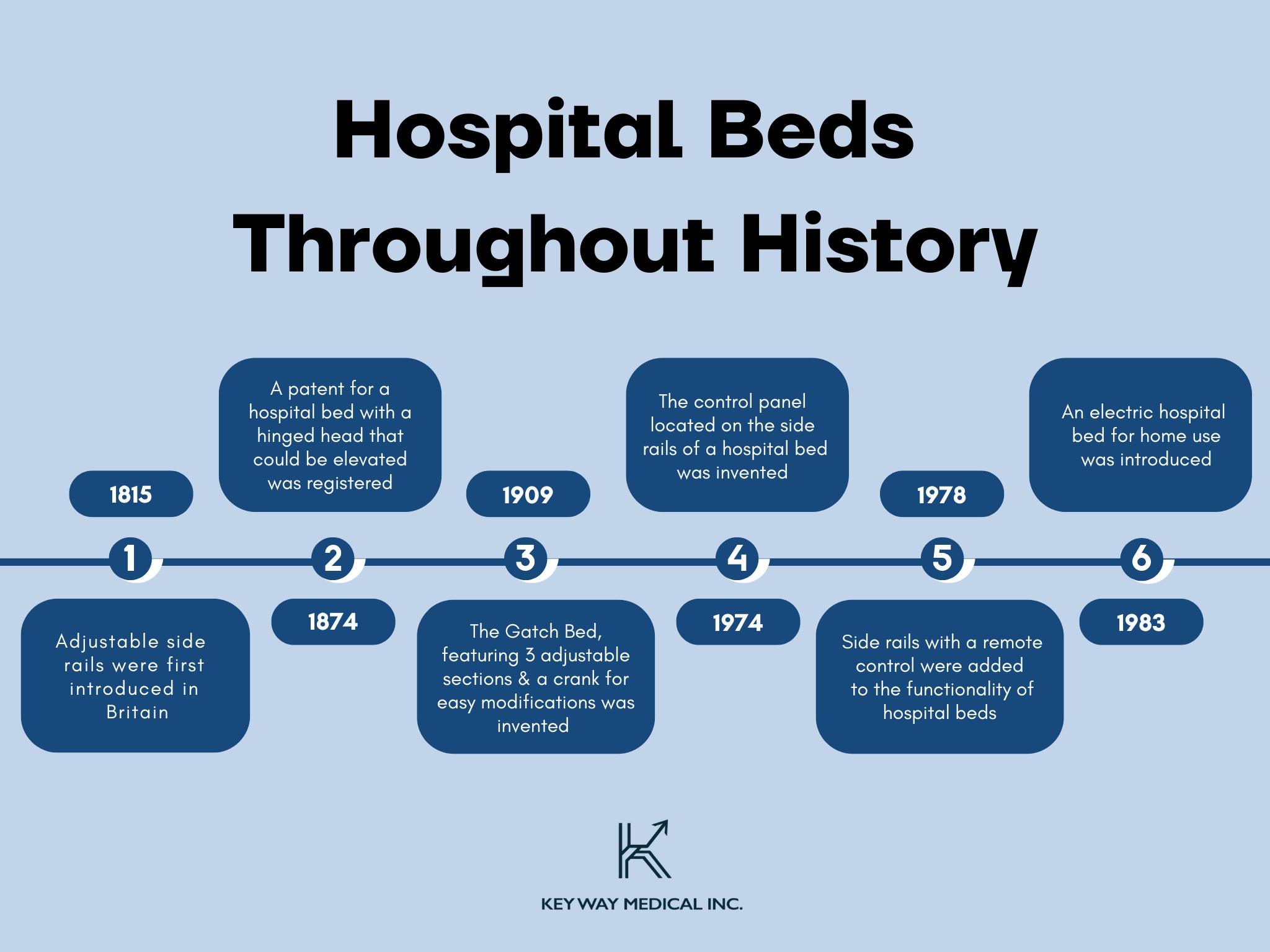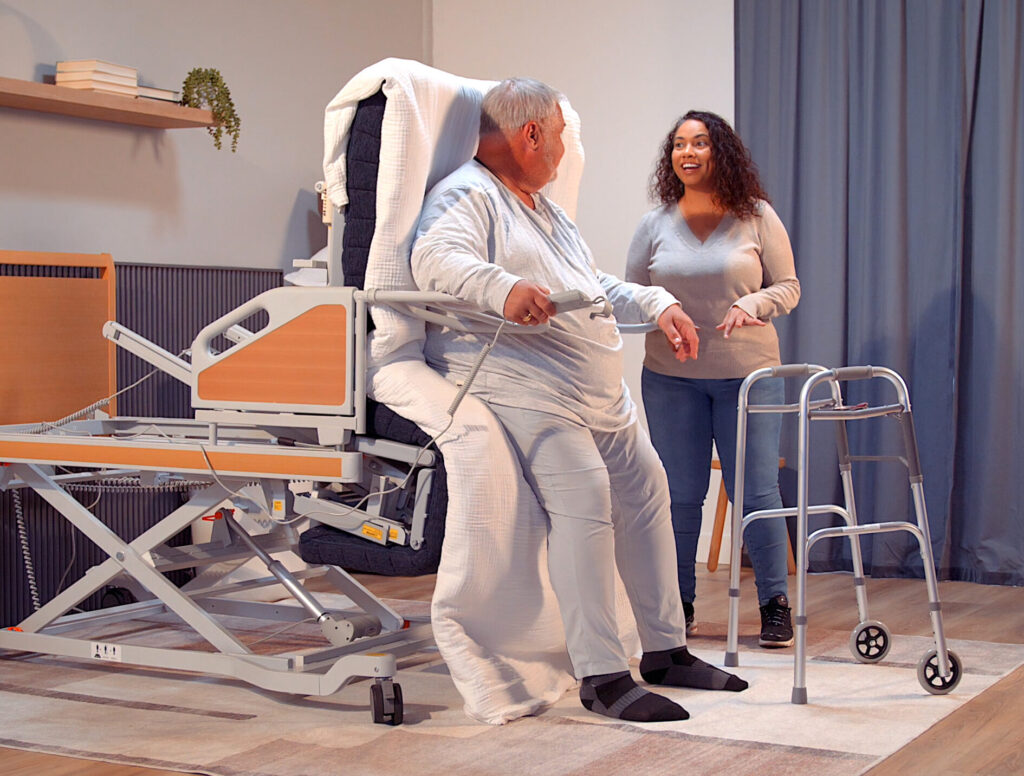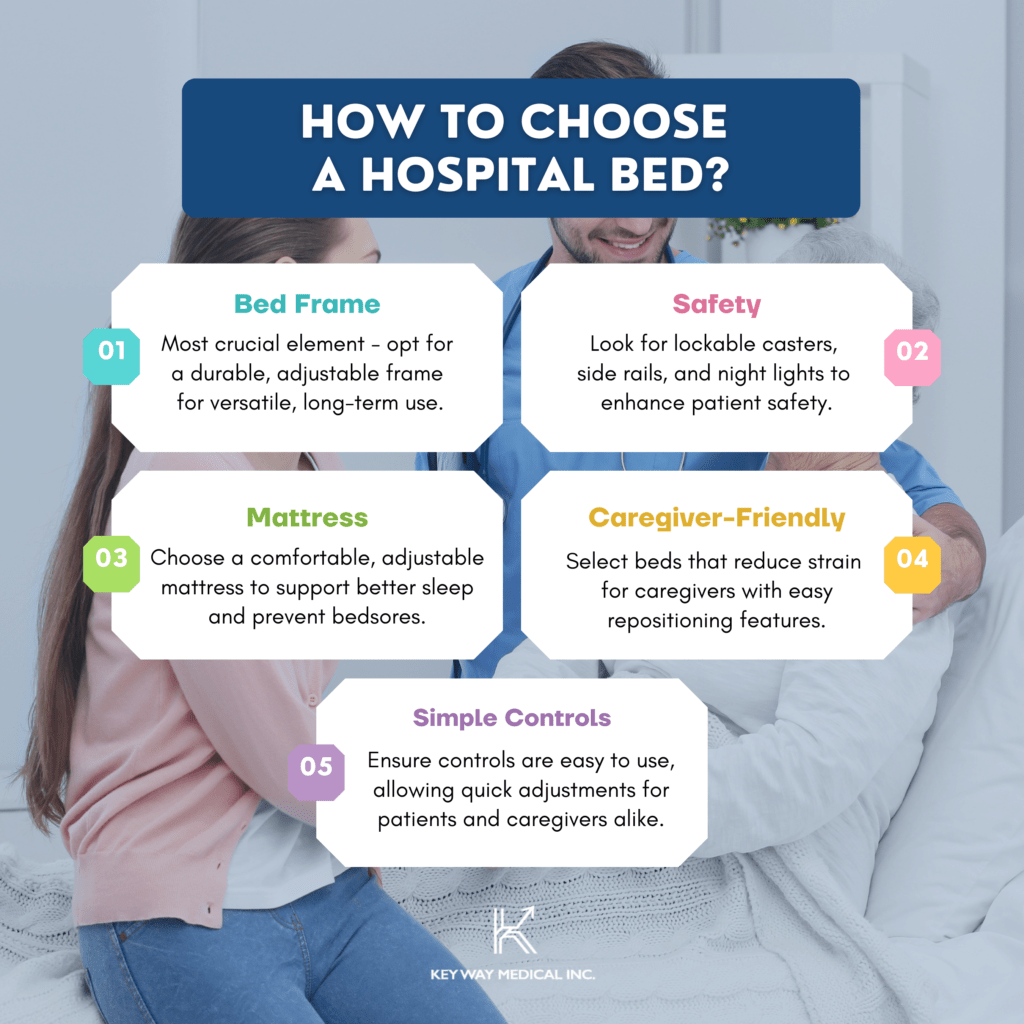
Hospital Beds: How to Choose the Right One
Did you know that today, there are about 2.5 million hospital beds and nursing home beds in use in the United States? Hospital beds are important than many realize as they can improve the quality of life and recovery process for patients and caregivers.
Furthermore, investing in a hospital bed can be very beneficial. It permits those who have spent time in the hospital to return home more swiftly and sleep safely. They are to relieve discomfort, encourage proper body alignment, prevent a contracture which is a fixed tightening of muscle, tendons, ligaments, or skin, and reduce the risk of respiratory infections in ways that can’t be achieved with a standard bed.
Surprisingly to many, hospital beds are utilized not only in hospitals, but also in several healthcare settings, including nursing homes, assisted living facilities, outpatient clinics, and home healthcare environments. After reading this article, you’ll feel confident in selecting the hospital bed that meets all your needs.
The Evolution of Hospital Beds

Journal of Physics Conference Series. (2016). From Modern Push-Button Hospital-beds to the 20th Century Mechatronic Beds: A Review. Retrieved from: https://www.researchgate.net/publication/302870220_From_Modern_Push-Button_Hospital beds_to_20th_Century_Mechatronic_Beds_A_Review
Hospital beds have significantly evolved from their original state as simple wooden frames that provide minimal comfort. By the mid-20th century, metal frames and better mattresses improved hygiene and patient care. After that, the 1960s and 1970s introduced adjustable beds, allowing for head and foot elevation. Today, advanced hospital beds feature smart technology, automated adjustments, and appropriate designs, prioritizing safety, comfort, and efficiency to meet a wide range of medical needs and enhance patient management in healthcare settings.
Furthermore, the integration of features such as pressure-relief mattresses, built-in monitoring systems, and customizable settings allows for personalized patient care, catering to the diverse requirements of individuals with varying health conditions. As healthcare technology continues to advance, hospital beds are expected to further evolve, incorporating innovations that not only improve patient outcomes but also streamline caregiving processes, making them an indispensable asset in modern medical environments.
What Are the Key Features to Take Note of When Looking for a Hospital Bed?
When choosing the right hospital bed, several key features should be taken into consideration to ensure optimal comfort, safety, and functionality for both the patient and the caregiver.
- Frame: The frame of a hospital bed is the most crucial component. Opting for a profiling frame that can be adjusted is essential for achieving optimal sleeping and resting positions. A robust frame is vital to withstand frequent use, particularly during extended recovery periods or in palliative care situations.
- Safety: Safety features are paramount in a hospital bed. Look for lockable casters to ensure the patient remains secure, especially for those with conditions that may cause involuntary movement. Beds with adjustable side rails provide better grip for patients when getting in and out of bed, significantly reducing the risk of falls. Additionally, pre-installed night lights can assist caregivers in safely helping patients get out of bed and guide patients if they choose to move around independently.
- Mattress: A comfortable, supportive mattress of a hospital bed plays a significant role in enhancing sleep quality and preventing bedsores. It is a great feature if the bed can be raised or lowered at the head, foot, or middle using a crank or motor, enabling a patient to rest in different positions for therapeutic benefits or comfort. Beds with adjustable backrests and reclining positions also help the patient with easier breathing, heartburn alleviation, improved blood circulation and so much more.
- Caregiver-Friendly: A hospital bed designed with caregivers in mind can ease the physical strain associated with patient care. Top-quality adjustable beds with help caregivers reposition patients more easily, minimizing the common risk of back strain and promoting a safer caregiving environment.
- Simple Controls: Ease of use is critical when it comes to controlling a hospital bed. Users should be able to switch controls quickly to alert their nurse for assistance, adjust themselves from an uncomfortable position, or get out of bed. It’s especially important to consider patients with cognitive impairments; having an intuitive controller with simple buttons can prevent frustration and ensure a smoother experience for both patients and caregivers.


Frequently Asked Questions to Help Determine Which Hospital Bed Will Be the Right Fit?
Here are some important questions to have the answers to while finding the right hospital bed:
Does the mobility of the patient matter?
Yes, when choosing a bed, the mobility of the user needs to be taken into consideration. For instance, confirming if they can get in and out of the bed without needing the assistance of another person, able sit upright on their own, if they are completely immobile, etc. should be noted. An all-electric long-term bed would be best for someone who needs the help of a caregiver the majority of the time as it would provide easy and convenient functionality for the patient.
Can a hospital bed be used at home?
A hospital bed can be used at home if it includes safety features such as bed rails, locking mechanisms, and emergency controls. Another way to confirm this would be to purchase a bed that is UL certified and/or FDA approved. These certifications will verify that the manufacturer meets their standard safety requirements.
What is the weight capacity of a hospital bed?
The standard hospital bed can hold between 400 to 600 lbs, but certain beds can accommodate over 1,000 lbs. Those beds are best for patients with a higher body mass. The size of the patient will ultimately determine if a particular bed will be able to support them.
What is the size of a hospital bed?
The standard hospital bed measures 36 inches in width and 80 inches in length. It is very important that the overall size and dimensions of a bed are taken into consideration. These devices will need to be able to effectively move around the patient’s living quarters or hospital room as it is essential for repeated use.
How do you know if a hospital bed is safe for a child to use?
To know if a particular bed is safe enough for a child to use, it should have certain features such as having adjustable height, enclosed barriers, or canopies. These features will ultimately work to prevent them from climbing out of bed and safely constrain their movement.
Our Innovative ReNuCare Standing Bed
While this article primarily focuses on guiding readers in choosing the right hospital bed for their or their loved one’s needs, we’d like to introduce you to an excellent option: the ReNuCare® Standing Bed.
Designed for both function and style, this bed offers exceptional mobility support and features a modern look that seamlessly fits into any home setting, unlike outdated commercial models. With the ability to transition between four positions — sleeping, reclining, sitting, and standing — it helps patients regain a sense of independence and comfort in their daily lives.
Choosing this option would not only please the person using the bed, but the caregiver as well! One might ask “Why?” and it is because this bed alleviates the majority of the physical responsibility of transferring their patient.
Conclusion: Resting in Exceptional Comfort
In summary, hospital beds are vital components of healthcare facilities and home care services, crafted to ensure patient comfort and support while aiding healthcare providers in delivering care. Over time, their design and features have significantly advanced to improve patient safety and the efficiency of care. By now, you should have the tools and knowledge that you need to find the one that is right for you or your patient! Of course, feel free to use this as a guide to refer back to if a little assistance is needed along the way.
If you’re seeking to invest in cutting-edge assistive devices that adhere to the highest standards of quality, safety, and sustainability, take a look at the ReNuCare® Standing Bed, ReNuCare® AI Mattress, ReNuCare® Power Ride Electric Wheelchair or ReNuCare® IERO Cruise Mobility Scooter. For more information or to schedule a demo, contact us today.
References
U.S. Food and Drug Administration. (2006). Hospital Bed System Dimensional and Assessment Guidance to Reduce Entrapment. Retrieved from: https://www.fda.gov/regulatory-information/search-fda-guidance-documents/hospital-bed-system-dimensional-and-assessment-guidance-reduce-entrapment
American Hospital Association. (2024). Fast Facts on U.S. Hospitals, 2024. Retrieved from: https://www.aha.org/statistics/fast-facts-us-hospitals
Centers for Medicare & Medicaid Services. (n.d.). National Coverage Determination – Hospital Beds. Retrieved from: https://www.cms.gov/medicare-coverage-database/view/ncd.aspx?NCDId=227
National Institutes of Health (NIH). (2015). The Safety of Hospital Beds. Retrieved from: https://pmc.ncbi.nlm.nih.gov/articles/PMC5371163/
National Institutes of Health (NIH). (2017). What Bed Size Does a Patient Need? The Relationship Between Body Mass Index and Space Required to Turn in Bed Retrieved from: https://pmc.ncbi.nlm.nih.gov/articles/PMC5671795/


